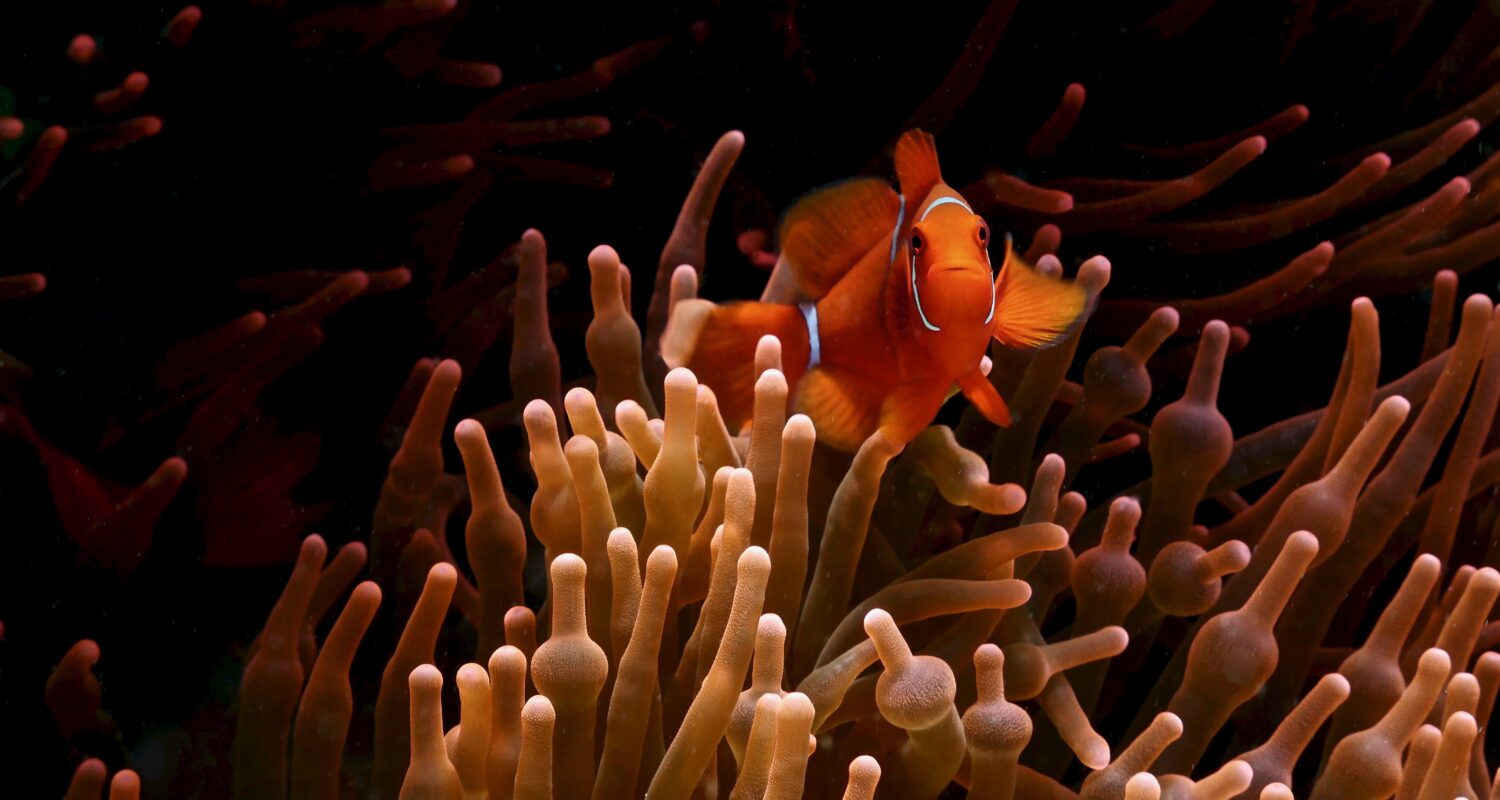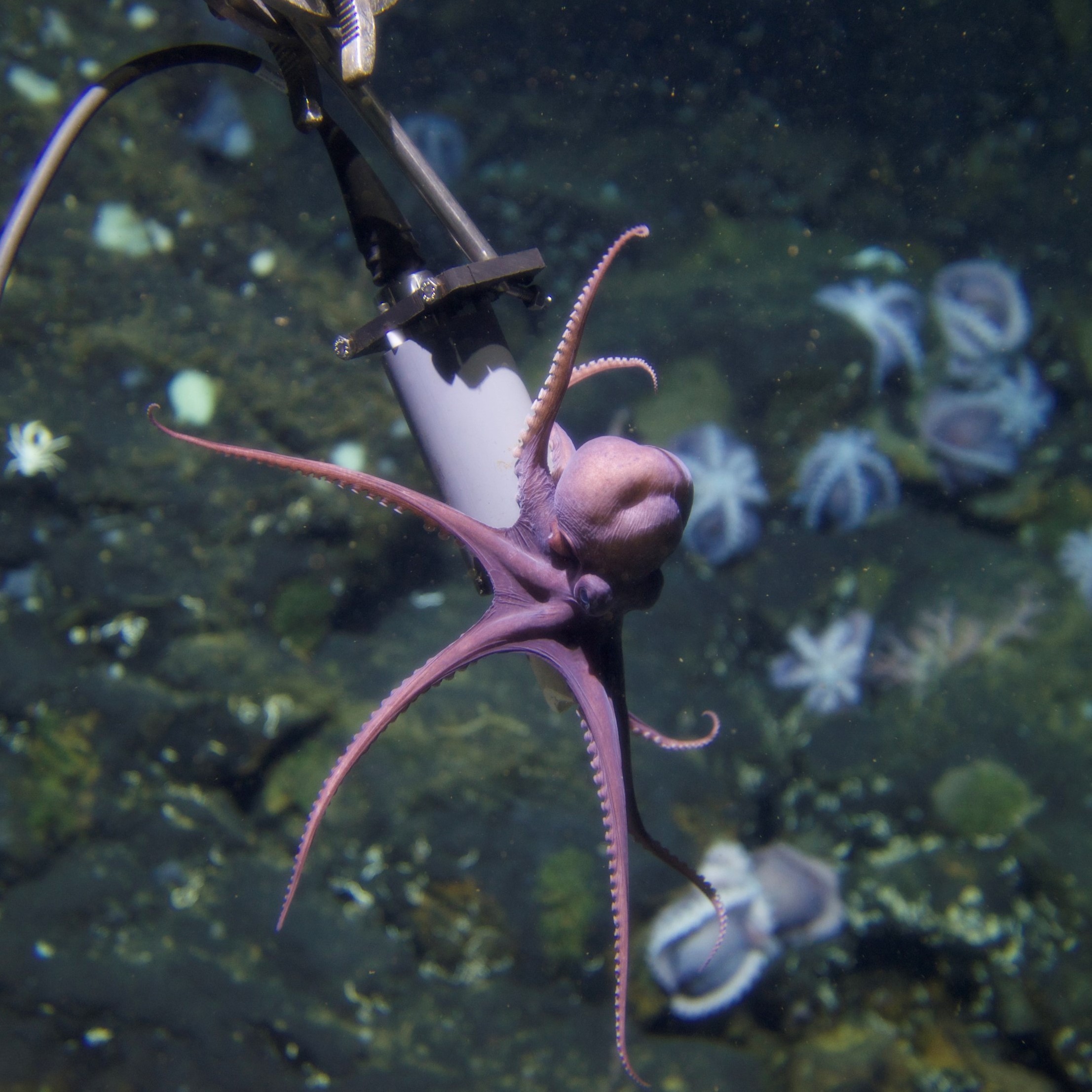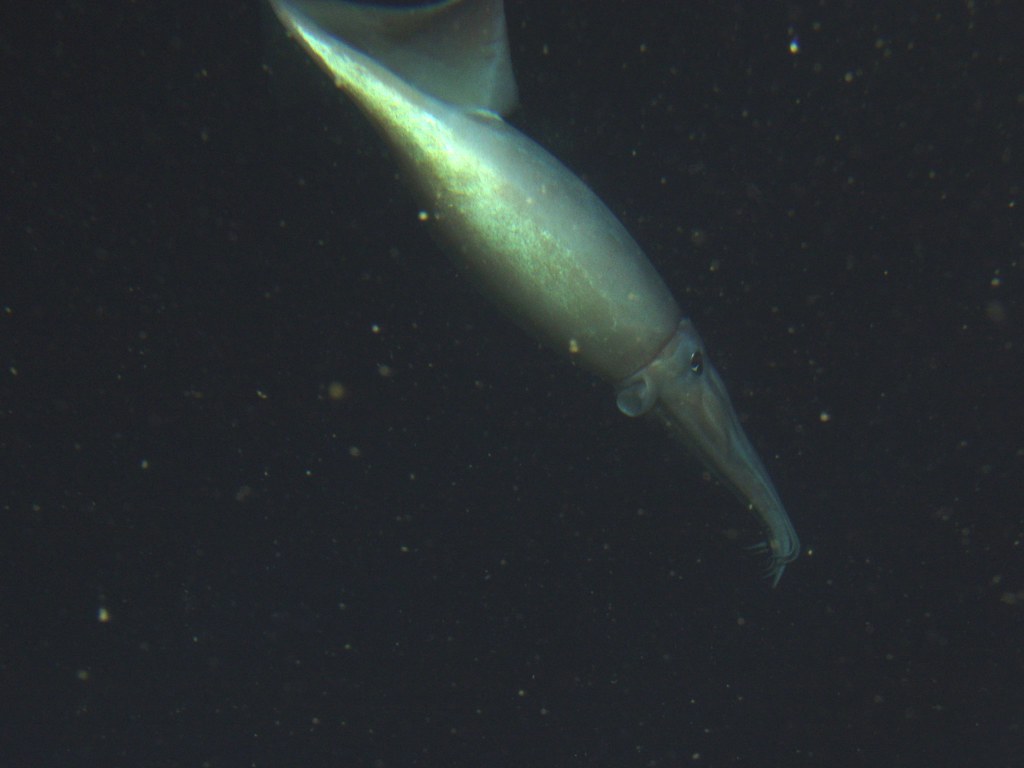Besson, M., Feeney, W. E., Gache, C., O’Brien, D. A., Berthe, C., Cowan, Z. L., Brooker, R. M., Laudet, V., & Lecchini, D., (2023). Anemone bleaching impacts the larval recruitment success of an anemone-associated fish. Coral Reefs, 42, 195–203. https://doi.org/10.1007/s00338-022-02323-x
Mutualisms in coral reefs
In coral reefs, there are boundless examples of different species interacting closely to benefit each other. Ecologists refer to this concept as mutualism. Have you ever wondered why Nemo lived in a stinging anemone? Anemones give anemonefish – fish that live in sea anemones – a safe haven, while fish waste acts as a nutritious fertilizer for anemones. Unlike most fish, anemonefish have a thicker mucus that protects them from the venomous tentacle stings. Another classic example of mutualism is between coral and their algal symbionts. The algae photosynthesizes and provides nutrients for the coral, while the coral serves as a stable habitat for the algae. Sea anemones have the same mutualistic interaction with algae. These exchanges serve as the backbone for reef biodiversity; however, rising ocean temperatures due to climate change is threatening these relationships by causing bleaching events. When the water gets too warm, the coral or anemone will expel the algae living in its tissues and turn ghostly white. They will eventually die if hotter conditions persist and they remain in a bleached state for too long. Recognizing how these bleaching events impact the numerous species that rely on corals and anemones for survival is crucial for protecting our oceans. To learn more about this, scientists conducted a series of field and laboratory experiments to study the effect of bleached anemones on newly settled anemonefishes (those that have survived the larval stage and are settling into a home territory).
Bleached or unbleached?
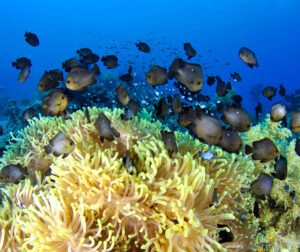
Researchers used the threespot dascyllus (Dascyllus trimaculatus), a common coral reef anemonefish, for their field surveys and laboratory experiments. Divers counted newly settled fishes in anemone patches around Moʻorea, French Polynesia and noted whether the patch was bleached or unbleached. In the laboratory, anemonefish were placed in a tank and given a choice between bleached or unbleached anemones to assess their visual preference. To test the protection benefits of bleached versus unbleached anemones, researchers added a predator fish to a tank with the anemonefish and either a bleached or an unbleached anemone. They counted the number of anemonefish that survived after 24 hours.
In both the field surveys and laboratory experiments, the research team found that significantly more anemonefish preferred the unbleached anemone over the bleached anemone. Further, when a predator was around, the survival rate was much higher among anemonefish with an unbleached anemone than a bleached anemone. Overall, the results suggest that bleached anemones provide less protection and are less desirable than unbleached anemones to recently settled anemonefishes. The researchers hypothesized that anemonefish prefer unbleached shelters because the stark white color of bleached anemones makes them more conspicuous to predators.
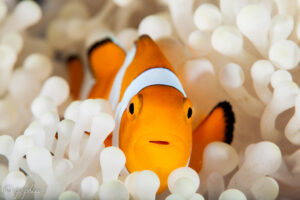
The big picture
Coral reefs are highly complex ecosystems that rely on mutualisms. Understanding these interactions is critical for guiding marine conservation efforts since a breakdown in these mutualisms causes detrimental cascading effects, as shown in this study. Rising ocean temperatures disrupt the beneficial relationship between sea anemones and algae, which in turn threatens the secondary mutualism between anemones and fishes. Ultimately, these findings highlight the interconnectedness of reef systems and the danger of warming oceans. Bleaching events do not just mean bad news for corals and anemones, but also for the countless other species that rely on them like anemonefish.
Cover photo: Juvenile maroon clownfish (Premnas biaculeatus) in a sea anemone. Photo by Zackery Rago

I’m an MSc student in marine biology at the University of Hawaiʻi at Mānoa. I conduct research through the Johansen Fish Resilience Lab at the Hawaiʻi Institute of Marine Biology. I’m currently studying the effects of sedimentation on the foraging behavior of herbivorous coral reef fish. Before grad school, I got a double BS in environmental geology and environmental studies at Tufts University before working at a shark research lab in the Bahamas. In my free time, you can find me climbing, running, or reading at the beach.

